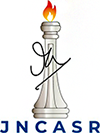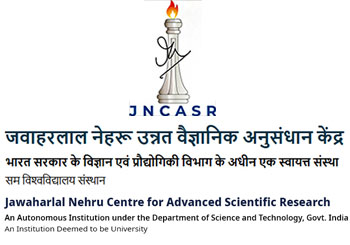Theoretical Sciences Unit Seminar - 21 November 2022
Theoretical Sciences Unit Seminar
Date: 21st November 2022 (Monday)
Title: Three-way Interplay of Strong Correlations, Topology, and Disorder in High-Temperature Superconductors
Speaker: Dr. Debmalya Chakraborty
Affiliation: Postdoctoral Researcher, Department of Physics and Astronomy, Uppsala University, Sweden
Time: 03:30 PM | Tea/Coffee: 03:15 PM
Venue: Kanada Auditorium, JNCASR
Abstract
One of the major challenges in condensed matter physics is to understand how many interacting electrons form different phases of matter. One such exotic phase of matter, formed solely due to the presence of interactions, is superconductivity. Since their discovery, superconductors have found applications across diverse fields of science, from medical science to high-energy and astrophysics. They have also been explored for practical applications such as lossless power transmission and magnetic levitation trains.
The practical usability of superconductors largely depends on the temperature range in which they exhibit superconductivity. It is widely believed that electron-electron interactions play a crucial role in achieving high superconducting transition temperatures. Recently, superconductors have been combined with topology to create topological superconductors, which have potential applications in topological quantum computation. However, real-world materials introduce disorder as an additional crucial component.
Using a high-temperature superconductor as an example, I will demonstrate how the interplay of strong electronic correlations, topology, and disorder generates a new quantum phase of matter: a fully gapped "phase crystal" state. This state breaks both translational and time-reversal symmetry, characterized by a modulation of the d-wave superconducting phase co-existing with a modulating extended s-wave superconducting order. Unlike conventional expectations, this phase crystal state remains remarkably robust to disorder, but only in the presence of strong correlations. This provides a clear route for its experimental realization [1].
Furthermore, I will discuss how understanding the roles of interactions, topology, and disorder can not only help solve existing unsolved puzzles but also pave the way for discovering new materials with novel functionalities.
Reference: D. Chakraborty et al., npj Quantum Materials 7, 44 (2022).
All are cordially invited.
- Back to previous page
- |
-
Page last updated date:06-06-2025 08:24 PM























